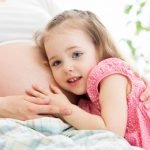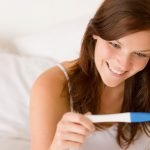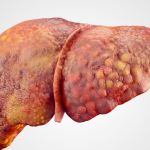A Naturopathic Approach to Intrauterine Insemination
Conceiving with Compassion
Deborah Gleisner, ND, LM, CPM and Setareh Tais, ND
Infertility is a surprisingly common condition with significant psychological, social, medical and economic implications. The National Survey of Family Growth estimates that 1.2 million women sought medical attention for infertility in 2002 and 10% had received some form of treatment for their infertility at least once in their lifetime.1 For patients who have access to reproductive medicine, there is variability in attitudes and experiences about their health care regardless of their outcome. A more holistic approach to artificial insemination is a niche that naturopathic doctors are perfectly poised to fill. The atmosphere of a fertility clinic is often cold and sterile which is not conducive to relaxation and fertilization, much less the spiritual undertaking of creating a new being. As naturopathic doctors we can provide our patients with a holistic approach to infertility, create a comfortable and caring environment, and allow their partners to participate in the reproductive process.
Intrauterine Insemination (IUI) is a sterile technique where a washed, prepared sample of sperm is placed inside the uterus using a specialized catheter.2 Couples can choose to use donor sperm or fresh sperm. Fresh sperm samples need to be washed before IUI because the cervix normally acts as a barrier to seminal fluid, prostaglandins, bacteria, and leukocytes. Inseminating without washing first can lead to unwanted side effects such as uterine cramping and anaphylactic shock. Washed samples also have immature and immotile sperm filtered out thereby increasing the concentration of healthy, motile sperm placed in proximity to the oocyte.3 One of three techniques are usually employed: (1) a simple wash in a protein-rich, antibiotic media, (2) a density gradient sperm wash using a centrifuge, or (3) a swim up technique in which only the fastest sperm are selected.4 The investment necessary to wash sperm in-office is modest, requiring a reusable incubator ($400) and wash kits ($80) for each sample. Donor sperm can be obtained from a large number of different sperm banks. Patients can browse by ethnicity, body type (hair or eye color, height, build, etc.), religious preference, education level, blood type, willingness to meet, and many other qualities. Samples cost between $300 and $600 dollars per vial, with 1-2 vials used per month. Donor sperm is kept frozen and shipped out to the patient (or doctor) when needed.
Intracervical Insemination (ICI) differs from IUI in several important ways. ICI can be done using a fresh sperm sample (with no special processing) and is done by placing the sample right at the face of the cervix. A conception cap can be placed on the cervix afterwards to help encourage sperm migration into the cervix. Check the scope of practice in your State to determine if you are licensed to perform IUIs and/or ICIs.
Timing is critical for artificial insemination and must be done on the day of ovulation. Ovulation Predictor Kits (OPKs) measure levels of Luteinizing Hormone (LH). The serum LH spike typically predicts ovulation within 24-56 hours, which translates to ovulation approximately 32 hours after the urinary LH spike5. The egg has a lifespan of approximately 24 hours after ovulation. Normally ejaculated sperm have a lifespan of approximately five days6 but frozen or washed sperm may not survive as long. From a practical standpoint, the day after the LH spike is best for insemination. If the couple chooses to do two inseminations per cycle the insemination is performed the two days following the LH peak. However studies have not shown a significant improvement in pregnancy outcome with double insemination protocols.7
Table 1: Pre-Insemination Guidelines:
| PHYSICAL EXAM | Perform general screening exam, including pelvic and bimanual. |
| LABS | (Woman) Collect samples for serum FSH and estradiol (day 3 of cycle), thyroid screen, Pap, STI testing, and others as appropriate.(Male partner) STI screening, semen analysis (Donor) Sperm banks require extensive screening so no additional testing is necessary. |
| IMAGING | Refer for hysterosalpingography to verify patency of at least one fallopian tube |
| OVULATION ASSESSMENT | Instruct patient on Basal Body Temperature (BBT) charting, and using OPKs. OPKs should be used one week prior to anticipated ovulation to make sure the LH surge is detected. The best time to test is between 2 and 3:30 pm, but any time after 12 pm is acceptable. |
| SAMPLE COORDINATION | Patient should order donor sperm to arrive slightly before ovultion or coordinate timing with live donor. |
| IUI APPOINTMENT | Schedule the insemination appointment the day after the LH peak (positive OPK) or on the day of the basal body temperature spike (although the latter is less favorable since the temperature spike occurs after ovulation) |
Conventional IUI protocols may include ovarian stimulation via clomiphene citrate and/or human menopausal gonadotropins, although further discussion of such medications is not within the scope of this article. Human chorionic gonadotropin (hCG) can be used to trigger ovulation, with or without ovarian stimulation. Most protocols use an hCG injection in the evening followed by IUI 36 hours later. Controlling when ovulation occurs can help increase the chances of conception in a given month. Research your state license to see if the use of hCG is included in your scope of practice. Even if you don’t administer hCG you can order serial ultrasounds near ovulation to watch for follicular rupture.
Table 2: Insemination Procedure:
| SPERM PREPARATION | (1) Thaw frozen sample according to sperm bank instructions, or(2) Process fresh sample according to kit instructions(BOTH) Draw up prepared sample (0.3-0.5 cc) in an IUI catheter connected to a 1 cc syringe. Use precautions to avoid air bubbles and preserve sterility at the tip of the catheter. |
| PATIENT PREPARATION | Instruct the patient to lie in the dorsal lithotomy position on the examination table with her feet in stirrups. If performing at home have the patient lie on the bed with a pillow under her hips and her legs in a butterfly position. Insert a speculum and visualize the cervix. |
| INSEMINATION | Insert the IUI catheter 5-6 cm into the cervical os, making sure not to touch the vaginal walls. A tenaculum or ringed forceps may be necessary to straighten the cervix and allow entry of the catheter. Slowly inject the sample into the uterus then withdraw the catheter. Encourage the partner to participate if he/she is interested. |
| AFTER CARE | Instruct the patient to rest for 10-15 minutes before getting up. This is optional as research has not verified its benefit. Some cramping during or after the procedure is considered normal. |
The effective rates of pregnancy using these two techniques are difficult to quantify. Most traditional couples using IUI or ICI are utilizing these techniques as a first step in overcoming infertility issues, such as low sperm count or scarred fallopian tubes. On the other hand, same-sex couples have wildly different success rates because they are not using IUI to counter infertility. Most couples can expect to conceive naturally within six months, and 60% of those conceptions happen within the first two months. IUI success rates have been reported as approximately 10-20% per cycle. By comparison, the natural conception couples have a 30% chance per cycle for the first two months then a decreasing success rate as time goes on. It is often suggested that women trying to conceive with IUI should consider 4-6 cycles and if unsuccessful move on to more rigorous methods like in vitro fertilization (IVF). The Sperm Bank of California compiled data in 2008 and determined that IUI with their clients was twice as successful as ICI and had an average success rate of 17.2% per cycle(Sperm bank)8 They looked at who was using their services and only 7% were heterosexual couples. The remainder were single women or lesbian couples.
As naturopathic doctors and primary care doctors, we can not only increase access to reproductive services but we can provide high quality, holistic reproductive services by creating a nurturing, compassionate environment for the insemination process. Some principles by which a naturopathic approach can improve the insemination experience are as follows:
- EDUCATION. Provide education on healthy diet and lifestyle to maximize fertility. Consider suggesting a detoxification program prior to conception or recommending hypo-allergenic, sperm-safe lubricants if needed.
- NATURAL MEDICINES. A plethora of herbal medicines can be used to help support healthy ovulation. They are particularly helpful for anovulatory patients for whom prescription medications have failed, for those who cannot tolerate the side effects, or for those who have a philosophical preference to avoid them.
- VISUALIZATION. Provide a meditation time before the procedure to enroll the couple. Have the woman/couple bring an item or two to focus on during the procedure that represents the baby. Suggest using intention or visualization during the thawing and insemination procedures.
- PARTICIPATION. Allow the partner to depress the syringe, thereby symbolically helping with the conception. Give the couple some time after the procedure to set the intention of a successful conception.
- NURTURING. Provide an option to do a home visit so the insemination can happen in the couples’ bedroom. This option may be particularly appealing to couples using fresh sperm. You can arrive just after the sperm sample has been collected, do the wash and the insemination, and leave while the woman is still resting.
Many single women, same sex couples and infertile couples are looking for compassionate reproductive services. What better way to treat the whole person and the whole family?
Deborah Gleisner, ND, LM, CPM received her doctorate of naturopathic medicine and midwifery degree from Bastyr University in 2009. She has a private practice in West Hollywood, CA, where she works with women and babies at all stages of life. Her website is www.DeborahGleisnerND.com, and she can be reached at [email protected].
Setareh Tais, ND received her doctorate of naturopathic medicine from Bastyr University in 2009. She is currently in her second year of residency at the Northwest Center for Optimal Health, a family medicine clinic in Marysville, WA, where she sees a diverse patient population and has been working on various clinical research projects. She can be reached at [email protected].
References:
CDC Reproductive Health. A public health focus on infertility prevention, detection, and management. Available at: http://www.cdc.gov/reproductivehealth/Infertility/Whitepaper-PG2.htm (Accessed on November 30, 2010)
Keck C, Gerber-Schafer C, Wilhelm C, Vogelgesang, Breckwoldt M. Intrauterine insemination for treatment of male infertility. International Journal of Andrology 1997. vol 20, supplement 3, 55-64.
Ibid
Paasch U, Grunewald S, Glander HJ. Sperm selection in assisted reproductive techniques. Soc Reprod Feryl Suppl. 2007; 65:515-525.
World Health Organization. Temporal relationships between ovulation and defined changes in the concentration of plasma 17-β estradiol, luteinizing hormone, follicle stimulating hormone and progesterone. Am J Obstet Gynecol. 1980;138:383–90.
Gould JE, Overstreet JW, Hanson FW. Assessment of human sperm function after recovery from the female reproductive tract. Biol Reprod. 1984;31:888–94. doi:10.1095/biolreprod31.5.888.
Rahman SM, Malhotra N, Kumar S, Roy KK, Agarwal A. A randomized controlled trial comparing the effectiveness of single versus double intrauterine insemination in unexplained infertility. Fertil Steril. 2010; 94(7):2913-5.
The Sperm Bank of California, Fall 2008 Newsletter. Volume XIV, No 4.









